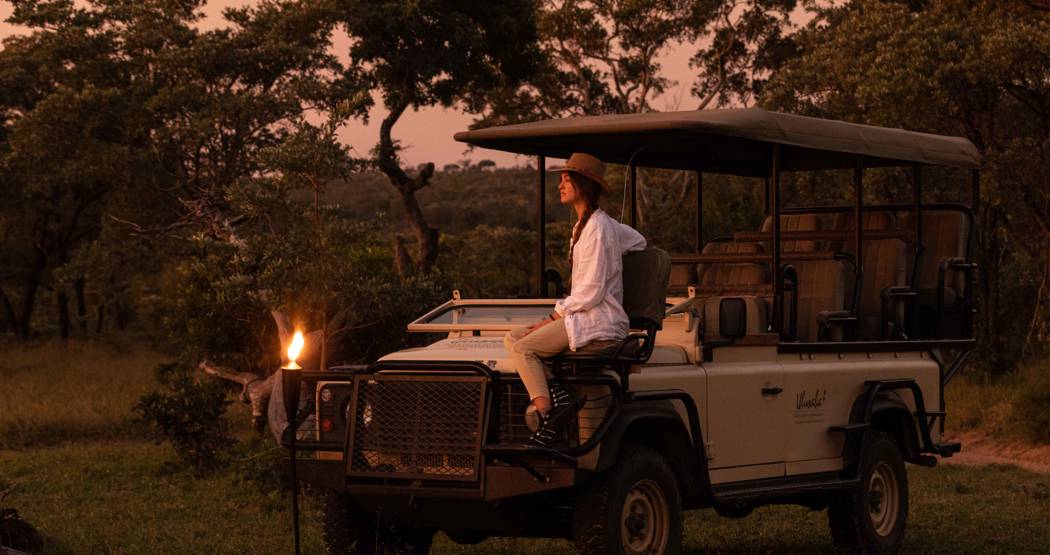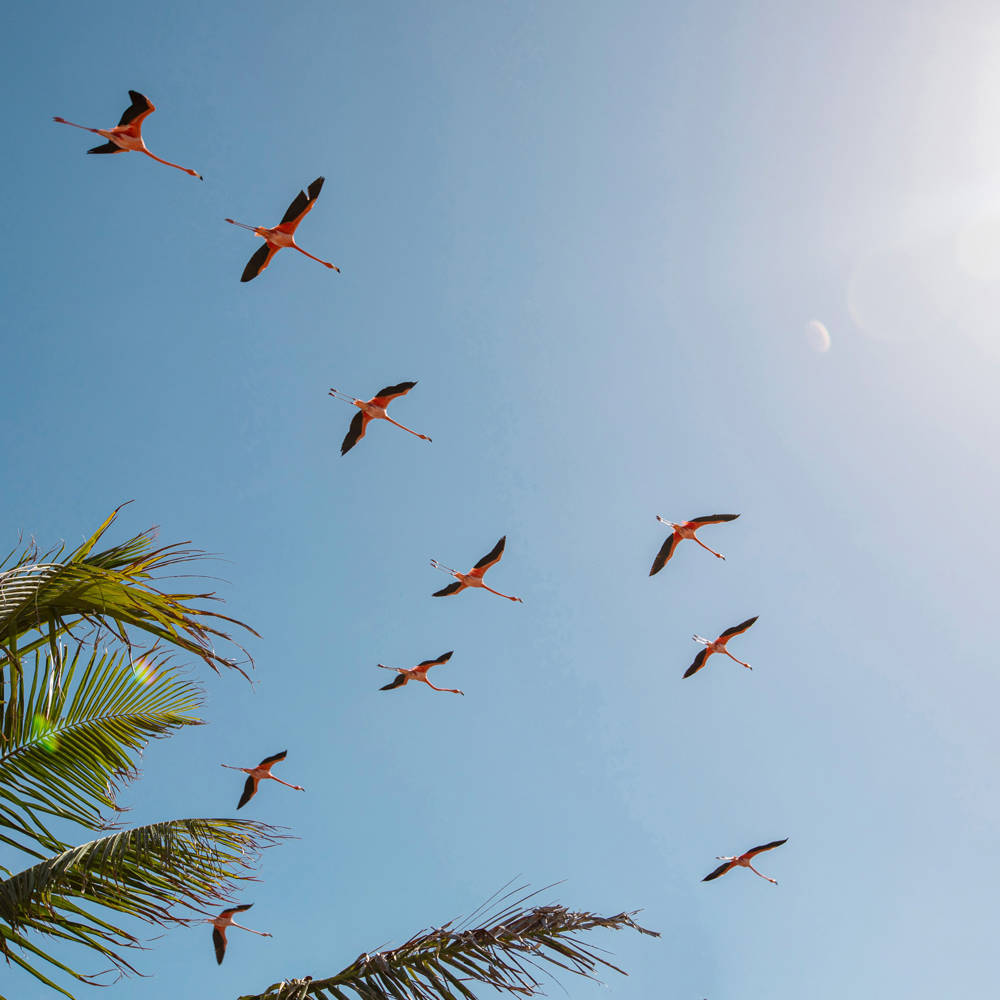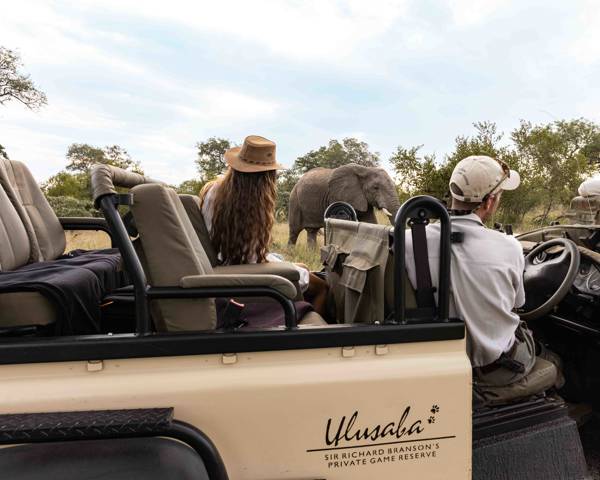First time safari? Kenya vs South Africa
Kenya or South Africa for the adventure of a lifetime
Two beautiful countries, yet two different destinations, Kenya and South Africa both make for great options for a safari adventure. A once in a lifetime experience, nothing beats observing a young elephant playing with other members of its herd in the water or seeing a lion for the first time stalking his prey across the savannah – but which destination to choose?
We often get asked this question and while with Virgin Limited Edition you can experience spectacular safaris in both Kenya at Mahali Mzuri and in South Africa at Ulusaba, we really believe you really can’t go wrong with either. Perhaps just to make it that little bit easier to decide, we have put together a handy overview of both destinations.

Kenya – the original home of safari
Kenya is the birthplace of the safari, and it’s not hard to see why. With its vast open plains teeming with wildlife, this country is truly magical, and visitors will often spot lions, leopards, elephants, rhino, and African buffalos – also known as the Big Five – within the first few days of their stay.
Nature’s most thrilling event
Every year between July and October, the country bears witness to one of nature’s most spectacular events: the Great Migration. Following the rains, more than 1.5 million wildebeest, 400,000 zebra, 300,000 gazelle and 12,000 eland – with stalking predators never far away – cross the open landscape of the Serengeti to the Maasai Mara, in search of fresh pastures to graze.
Escape the crowds
While Kenya has several National Parks and reserves, much of its spectacular wildlife can be found in conservancies, often encompassing important migratory corridors. These areas belong to landowners – either a community or an individual – and are co-managed with tourism partners to a model protecting the delicate ecosystem and benefitting local communities. Uncrowded and with an exceptional animal diversity, conservancies are perfect for exclusive safari experiences.
The Olare Motorogi Conservancy – owned by over 300 Maasai landowners and home to our luxurious 12-tented camp Mahali Mzuri– offers some of Kenya’s finest, year-round wildlife viewing. The area boasts one of the highest concentrations of big cats in Africa and is reputed to have the lowest vehicle density in the Maasai Mara region. With over 300 bird species, including 50 different species of raptors and with over 35,000 acres of grassland, rolling hills and plains for wildlife to roam freely, the conservancy is one of the richest ecosystems in the world. A number of lion pride territories meet in the conservancy and guests at Mahali Mzuri may be able to witness some spectacular encounters as the different groups battle for dominance.
What is the best time to visit Kenya?
The best time to visit Kenya largely depends on your reasons to visit. The weather varies throughout the year, but game viewing is spectacular all year round. With the bush less dense between June to October this period makes for a great time to spot the Big Five. July to September provides the highest chance of catching the Great Migration. While certain times of the year may see unpredictable weather, the country’s beauty and amazing wildlife are ever present.
South Africa – perfect for first timers or safari veterans alike
South Africa with its many national parks and private game reserves makes for a great safari destination, for first timers and true veterans of game viewing alike. The Sabi Sand Private Game Reserve – home to Ulusaba with its stunning lodges, Safari and Rock Lodge – is South Africa’s ultimate safari destination. Located on the unfenced border of the Kruger National Park allowing wildlife to roam freely and covering 65,000 hectares, the reserve offers unparalleled game viewing, including the much sought after Big Five. The reserve is in an area particularly renowned for its leopard sightings with this most elusive of animals often spotted during game drives.
An intimate safari experience
A less crowded and more intimate wildlife experience with access only for visitors staying overnight in the reserve, rangers here can drive off-road (something not possible in the Kruger National Park) enabling them to track an animal into the bush – making for real up-close encounters and perfect photo opportunities. The reserve’s trackers and guides – including our incredibly experienced team at Ulusaba- are some of the best in the safari business, sharing their wealth of knowledge and fascinating stories with visitors.
In addition to the Big Five, visitors may spot hippos in the river and warthogs by the waterholes, see clans of hyena and several antelope species such as impala or marvel at giraffes eating the leaves from the top of an acacia tree. Night-time drives allow for a glimpse into the Sabi Sand’s nocturnal life while joining rangers and trackers on a safari walk is an ideal opportunity to spot smaller creatures often missed on drives as well as discover many of the area’s plants and trees.
Sundowner Spectacular
A must-do on safari is having ‘sundowners’ – disembarking the game drive vehicle to sip on a refreshing drink, feast on delicious snacks and take in the striking sunsets from a vantage point in the bush. With National Park rules prohibiting visitors from exiting vehicles, this memorable experience is really something that can really only be done in private game reserves such as the Sabi Sand.
What is the best time to visit the Sabi Sand Private Game Reserve?
With constant dependable game viewing, the Sabi Sand is really a year-round destination. The winter season runs from May to October and is the coolest and driest period with vegetation thin and trampled making animals easier to spot, especially given many of them will be gathered near rivers and waterholes. Summer rains turn the reserve into a lush and flowering landscape with vast flocks of migratory birds and new-born animals, a good time to spot prey and predator interaction.
Still unable to make up your mind? Perhaps our offers for Mahali Mzuri in Kenya or Ulusaba in South Africa can help you decide.
Even more inspiration
The Great Migration
The Great Migration is the largest herd movement of animals on Earth, starting in the southern Serengeti and passing through the wider Maasai Mara ecosystem, home to Mahali Mzuri.




